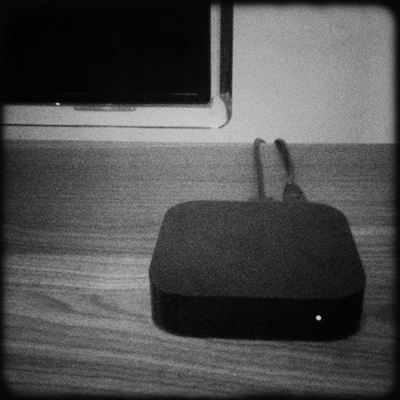Living Without TV
For the past six months, we’ve lived without television, at least in the conventional sense. There are two TVs in the house, but neither is connected to a TV service, either free-to-air, or cable. You can’t just turn the TV and watch “something” or “channel surf.” Why Have A TV? It’s a pretty bold countercultural […]
For the past six months, we’ve lived without television, at least in the conventional sense. There are two TVs in the house, but neither is connected to a TV service, either free-to-air, or cable. You can’t just turn the TV and watch “something” or “channel surf.”
Why Have A TV?
It’s a pretty bold countercultural move not to have a TV in the house. I’ve know people who do it, but a more common move is to relegate the TV to a secondary space in the home, maybe hide it in some kind of furniture, or arrange living spaces so that you don’t automatically face a television when sitting down.
But like any home appliance, it’s worth asking if we really need to have a TV and, if we do, what purpose it serves for us.
My TV needs
For a long time I’ve said that the only reason for cable TV was news and sports. Increasingly my interest in sports has whittled down to the point where I really only watch football and mostly, that is just English Premier League.
I stopped tuning into cable news a long time ago, because the coverage on world news services like CNN & BBC had become nothing more than short headline pieces repeated over and over with little detail or meaningful commentary. I’d rather digest news and opinions online, or through magazines, newspapers and podcasts.
I do love to watch films and programmes made for TV (either documentaries or serials). However, I stopped relying on a cable service for those when I moved to Delhi in 2003. It was easier and less stressful to buy DVDs and watch them at my leisure than be at the mercy of local programmers and unreliable cable services.
My Present Setup
Here in Singapore you can watch English Premier League online, via subscription service. The cost is quite reasonable, about the same for a whole season as the monthly cost of the heavily optioned Foxtel packages in Australia.
So, my TV has a BlueRay/DVD player attached for watching movies and TV shows and an Apple TV. The latter, a small unimpressive looking black box, is clearly the future of television.
The Apple TV Shift
With the Apple TV I can rent or buy movies, buy and watch TV series, tune into a world of radio stations, watch clips on YouTube & Vimeo as well as listen to all the music in my iTunes library and see the images I’ve stored in iPhoto. There are plenty of rumours that Apple are looking to expand the services Apple TV offers – including major sports like the English Premier League.
Intentional Versus Unintentional Television
Looked at in terms of habits, this marks a shift from intentional to unintentional viewing. In the old television model, stuff was bundled together and sold, to stations and cable providers and later to consumers. You tuned into what was available and had limited choices, especially if local stations chose not to run films or programmes you liked.
The new model asks you to make more choices upfront. There’s less random stuff being thrown in front of your eyeballs and what sits before you, either on a shelf of DVDs or a screen of Apple TV purchases is a reflection of your own tastes and preferences.
And, you win back all that vacant time that spent watching advertising, waiting for shows to start or tuning into other programmes just because they were “on.”
For someone trying to take control of their life and their influences, this is a much better state of play.





